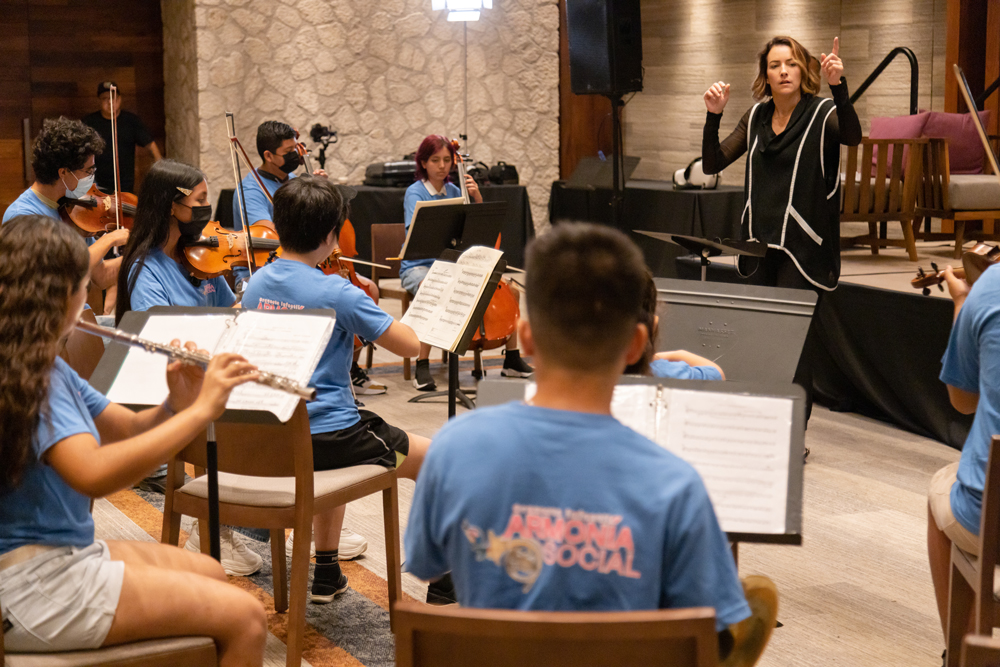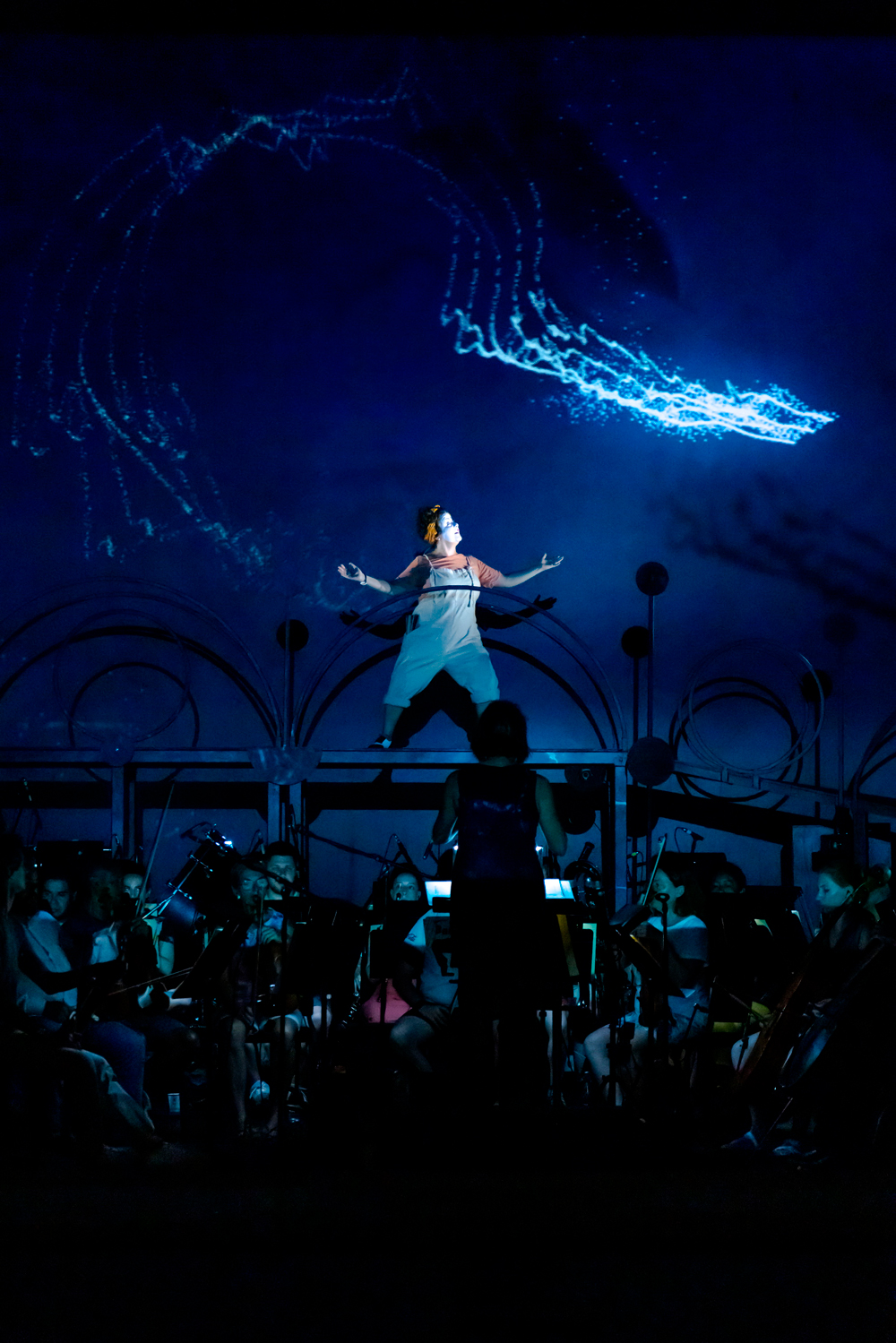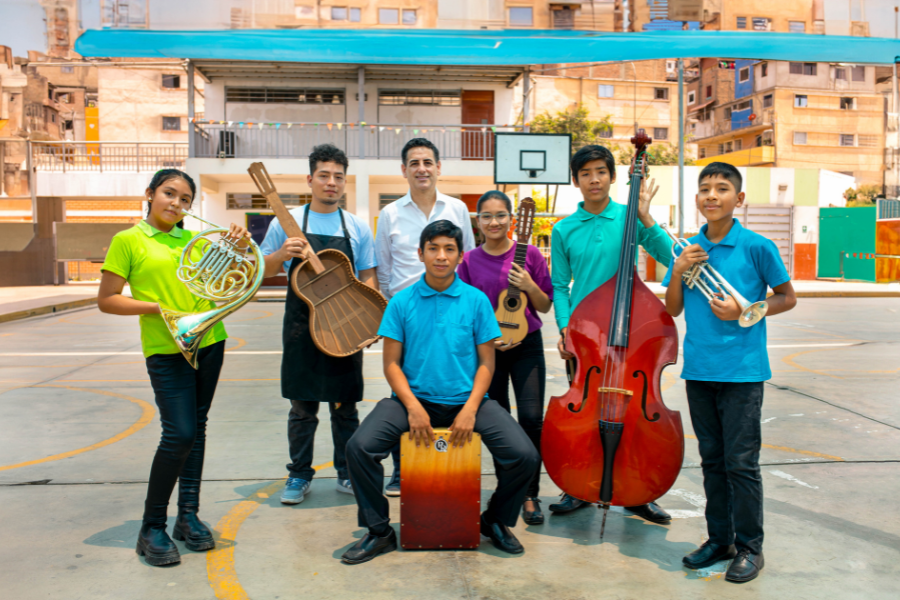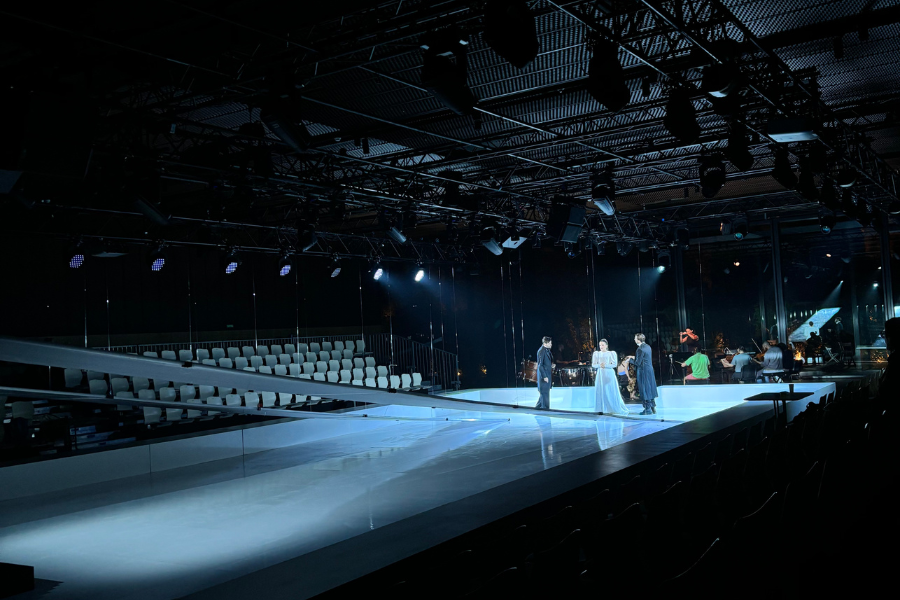Alondra de la Parra: “Cooperation must prevail over competitiveness”

In a year in which she inaugurated the first festival curated by herself, conducted world premieres of musical works, and led some of the most renowned orchestras on the cultural scene, conductor Alondra de la Parra is at one of the best moments of his career. Today he is preparing new projects, but without neglecting a multidisciplinary and collaborative vision: «Co-production between theatres, companies and orchestras plays a fundamental role in this because it entails a practice in which cooperation should prevail over competitiveness, teamwork over individualism and understanding the arts as a multidisciplinary practice”, explains Alondra in this exclusive interview for Ópera Latinoamérica.
by M. Angélica Navarro O.
Orchestra conductor, cultural manager and activist, Alondra de la Parra is one of the Latin American artists with the greatest international projection. “I am an artist who conducts orchestras, who manages projects and who understands that my work and my person can have a positive impact on society. This is a great privilege that of course I understand as a responsibility, and that I keep in mind in every step I take in my professional career”, says the artist, founder of the Philharmonic Orchestra of the Americas and principal guest conductor of the Orchestra Sinfonica di Milano since 2022.
With the music of this continent under his arm, de la Parra has conducted orchestras such as Orchester de Paris, London Philharmonic Orchestra, Tonhalle-Orchester Zürich, WDR Symphony Orchestra, BBC Philharmonic and L’Orchestra – Accademia Nazionale di Santa Cecilia in concerts and productions. scenic In concerts that she conducts in different cities around the world, works by Sergei Prokofiev, Arturo Márquez, Dmitri Shostakovich or Gabriela Ortiz can coexist. He regularly presents programs with works by Latin American composers in American and European cities and directed the world premiere of the ballet Como agua para chocolate, created by Joby Talbot (music) and Christopher Wheeldon (choreography) based on the novel by Mexican writer Ángeles Mastreta, which debuted at the Royal Opera House in London and will be presented at the Metropolitan Opera in New York in June 2023.
Of Mexican origin, Alondra de la Parra was born in the United States and grew up in Mexico. She began her musical training at the age of 7 with the piano and at the age of 13 she dabbled in the cello. She continued her studies in composition at the Centro de Investigación y Estudios Musicales (CIEM) in Mexico and then deepened in piano and orchestra conducting at the Manhattan School of Music in New York. “I remember when as a child I told myself that I wanted to conduct orchestras, one of the first doubts that assailed me was: How am I going to do this if I am not a man, white, adult and European? Because that was the prototype figure of the orchestra conductor, and I did not meet any of those criteria, ”says de la Parra. For more than two decades, the artist officiates as an orchestra conductor, with a work that has been widely recognized. Since the beginning of her career, she has had the drive of Latin American artists –creators and performers– at her center.

In June and July, the first version of the Paax GNP Festival was held, a music and performing arts event promoted by Alondra de la Parra.
What is your perspective on globalization and the revaluation of local cultures and identities? What challenges and opportunities open up at a time when we are asking ourselves questions or rethinking the configuration of the world?
More than a globalized world, I think we should head towards a world where respect prevails. For me that is the most important thing, and the world would be a very different place if the rules of the game were based on respect and trust. Under this gaze, all cultures and identities are equally valid, there are no cultural supremacies and the planet is a place to take care of. It doesn’t matter where you were born or what language you speak. It is from this perspective that we should reconsider the reconfiguration of the world.
This directly affects culture, like all areas of our lives. Particularly in my work as an orchestra conductor I see it very clearly: My role is to work together with the orchestra so that the musicians can do their job to the best of their ability, without hierarchies, without opinions… it is a constant conversation between me and the musicians. . It is both a challenge and an opportunity. A challenge because it breaks with the traditional stereotype of the conductor, who orders with his baton, and also an opportunity, because it shows that there are other forms of leadership.
“Many times the fundamental role that music plays for children and youth is not taken into account”
2022 was an intense year for the Mexican orchestra director. In April she was named principal guest conductor of the Orchestra Sinfonica di Milano and in June she directed, in London, the world premiere of the ballet Like Water for Chocolate, a co-production between the Royal Ballet and the American Ballet. In June and July, the first version of the Paax GNP Festival was held, a music and performing arts event held in the Mexican Caribbean, which brought together renowned artists and attractive premieres. The initiative also promoted an orchestral music education program for children and youth in the region, Armonía Social, with the intention of creating regional orchestras and training the Mexican musicians of the future.
She also premiered The Silence of Sound, a multidisciplinary artistic project created together with Gabriela Muñoz, artistically known as Chula The Clown, which offers an approach to music from the written tradition, based on a universal repertoire. Towards the end of the year, Alondra de la Parra released her latest album, Olé México, a repertoire that blends popular and classical music –with the interpretation of the Soloists of America Orchestra and the voices of Lila Downs, Buika, Pitingo– and that He has played live in different cities in Mexico.
What elements are important to consider in order to break with the myth that “classical” music –or music from a written tradition– is only for the elite?
It really is one of the gray clouds that surround classical music: its elitist conception. As an artist, I am aware of this, but at the same time I think that the role of music is to make us feel, to accompany us in life, to trigger the imagination, and that should be accessible to everyone.
In addition, many times the fundamental role that music has for children and youth is not taken into account. Understanding classical music as something dedicated solely to an adult audience is, from my point of view, a mistake. Especially music education, being part of an orchestra, learning to play an instrument. All these things teach us perseverance, teamwork, they show us new languages through which to express ourselves… For all these reasons, music should be a fundamental part of everyone’s education, and it is something that should start with school education. since we were kids. This is the idea behind the Social Harmony project that we have started from the PAAX GNP Festival.
The Silence of Sound program includes works by well-known composers of the 20th century, such as Debussy, Bartók, Stravinsky or Prokofiev. Why did you decide to choose those pieces of music? What elements did you take into account to create the program?
The Silence of Sound is a story of dualities, where music and the clown meet and explain the life story of the protagonist: Through music and gestures we see how the character goes through childhood, youth, meets love, passion, also disagreement, mismanagement of power, repentance, forgiveness. Of course she has a biographical component, but for me it was important that the greatest number of people could feel identified with the story. This has a lot to do with the question of the relationship with current times.
The Silence of Sound tells an absolutely current and timeless story. We say The Silence of Sound is intended for people ages 0-120, and we really mean it. It’s always a good time to bring classical music closer to society, this point is key in The Silence of Sound, and it has a lot to do with the current social moment. The selection of the works that make up the program build an orchestral guide through which the listener discovers great pieces of the 20th century, and in turn the different parts of the orchestra.
What diagnosis do you have regarding the diffusion of the Latin American repertoire in the theaters and concert halls of the continent? Do you think it is enough or could more be done?
I consider myself a very demanding person, and from that perspective of course I think that more can always be done. However, we cannot forget the great impulse that has been made in recent years. There are currently great Latin American artists to whom we must give a voice. This was one of the objectives of the PAAX GNP Festival and the Philharmonic Orchestra of the Americas, for example. I am proud of all my fellow artists who work hard and constantly to bring Latin American music to venues and theaters around the world.
An important part –practically half– of the Paax Festival program was made up of works by Latin American creators. Why did you decide to do that combination? What was the public reception?
The public reception was excellent. It fills me with emotion to remember those moments, the palpable happiness in the atmosphere during the concerts is something that I will never forget. It was a great experience for me. From a very young age I have felt a great commitment to Latin American culture, and for me it is important that the music we produce from there reach the world, and at the same time also bring it closer to the people of Latin America. To the more, the merrier: Music is emotion, passion, enjoyment, pain… music can explain life to you, and that is something that should be available to everyone, regardless of where you live, your education or your age.
The first edition of the PAAX GNP Festival was a great adventure, and a great leap into the unknown. I am happy to have been able to carry it out and it fills me with pride and emotion to announce that we are already preparing the second edition for the year 2023.
It often happens that the inclusion of the Latin American repertoire in the seasons –as it happens with contemporary music– generates a kind of culture clash between the more conservative public and the one that is more open to listening to other aesthetics. You have experience in this matter: What is the key to making this combination successful in terms of audiences?
I think there is no mathematical formula to guarantee success in these cases. Of course there are many factors that influence, such as the quality of the piece, of the musicians who interpret them, but also the disposition of the public and their affinities and previous experiences. It is the spectators who, upon receiving the pieces, complete them. These are all variable elements that we cannot control.
It is very important to rethink what we understand by success. In the classical music industry, we traditionally measure success based on parameters like attendance and expert reviews. And of course these are parameters that may be valid, but it is necessary to consider the possibility of measuring success also under other terms: For example: How many people who have attended the concert had heard a Latin American repertoire in a concert hall? What new things have you discovered, or felt, when listening to these pieces? Has it aroused your interest in knowing the musical repertoire of these cultures? For me, if any of these questions appear in the minds of the attendees, the combination has undoubtedly been successful.
Hispanic American countries share the same language and part of our history. What opportunities do you think there are for new creators in the Spanish-speaking world at this time, also taking into account that theatres, companies and orchestras are tending more and more to co-produce shows?
It’s a great thing that the doors of symphonic music open to other cultures. Music is a language that tells us stories, gives voice to our imagination and our experiences. The more opportunities there are for different people, from different cultures and perspectives, to participate in creating a narrative, the richer, fuller, and broader the story we tell will be.
Co-production between theatres, companies and orchestras plays a fundamental role in this, not only because of the opportunities for cultural openness it generates, but also because it entails a practice in which cooperation must prevail over competitiveness, teamwork over individualism and understanding the arts as a multidisciplinary practice. For me this is the future of the arts.
One of the ways to generate interest or identification with viewers is territorial proximity. Could the music of Latin American composers be a way of bringing new audiences closer to concert halls and theaters that cultivate “classical” arts?
Clear. The issue of identification, so in vogue in recent years, is of full importance. I remember when as a child I told myself that I wanted to conduct orchestras, one of the first doubts that assailed me was, how am I going to do this if I am not a man, white, adult and European? Because that was the prototype figure of the orchestra conductor, and I didn’t meet any of those criteria. I think that having references –be they from people, music, visuals– with which we can identify and feel represented directly influences how we approach the things that surround us.
What would you say to your fellow programmers from other festivals, venues or theaters to encourage them to include more Latin American repertoire? What role do you think artists have in this field?
In my experience, both for example with the Symphony Orchestra of the Americas or with the last album I have produced, Olé México, there is a thirst for this type of repertoire. For both programmers and artists it is important to get out of our comfort zone. My comment would be “Be brave, explore, let yourself be carried away by curiosity and by the commitment to make good music.”









